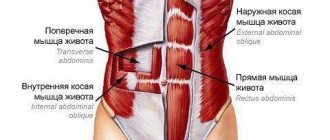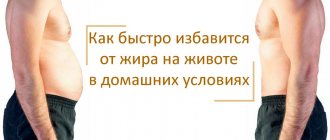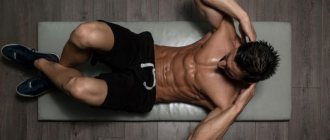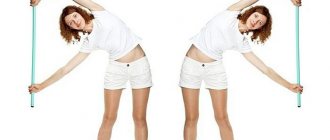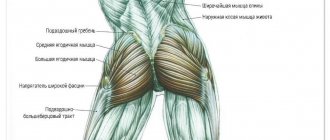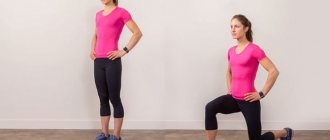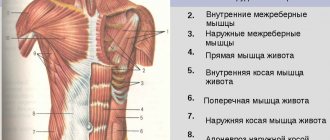Recently, many adherents of healthy eating have been talking about maintaining intestinal microflora. It's very simple: you need to eat fresh foods and also take in beneficial bacteria. Let's figure out what foods contain probiotics and prebiotics for the intestines and why they are needed.
About 100 trillion different bacteria live in the human body, a tenth of which is microflora. The rest are cells of microorganisms that live not only outside, but also inside a person. According to scientists, the human body contains about 2 kilograms of microbes that interact with cells and tissues.
What are prebiotics and probiotics for the gut?
Probiotics are live microorganisms that can be included in food products, for example, yogurt and kefir, medicines or dietary supplements. Their main task is to normalize the intestinal microflora, destroying bad bacteria.
Prebiotics are substances that are needed for the growth and development of good bacteria. If there are a lot of prebiotics in the body, beneficial bacteria feel comfortable and protect you from negative environmental factors.
The list of foods with prebiotics is long. These components are found in large quantities in fruits (bananas), vegetables (onions, corn, garlic, beans, peas), as well as in dairy products, bran and cereals.
Prebiotics include organic compounds:
- oligofructose;
- inulin;
- apple pectin;
- calcium pantothenate;
- lactulose;
- dietary fiber (fiber);
- algae extracts;
- glutamic acid;
- carotenoids.
When choosing probiotic yogurts in the store, pay attention to the number of lactic acid bacteria. In a high-quality drink there will be at least 10 7 CFU per 1 gram of product.
Gluteal bridge
This exercise strengthens the pelvic floor muscles well. You can perform it either in a simple version (two feet are on the floor) or in a complicated version (one leg is raised up or lies on the knee of the other). Perform 15 repetitions in 3 sets.
All of the above exercises for diastasis are simple, but quite effective. If you perform them regularly at least 3 times a week, plus all this, adhere to a balanced fractional diet and do at least short light cardio several times a week, then the result can be seen after 1.5-3 months for girls with 1 stage of diastasis and after 4-8 months (possibly up to 1 year) for girls with stages 2 and 3 of diastasis. The main thing to remember is the regularity of training and the correct technique for doing the exercises.
I hope I was able to answer all your questions, and now you know that small natural diastasis after childbirth is a normal phenomenon that can be combated with specially selected exercises. You also learned how to determine whether you have diastasis recti or not, and what to do if you do find it in yourself. I hope that the above exercises for diastasis will help you reduce its size and return your belly to its prenatal state.
Sincerely yours, Janelia Skripnik!
The role of pro- and prebiotics in the body
The main function of the intestines is to protect the body, which is impossible without good bacteria. This organ protects a person from poisoning, infections and eating disorders. Each organism has an individual intestinal microclimate - a community of bacteria that interact with each other and control everything that gets inside.
If harmful bacteria or other irritants enter the intestines, prebiotics and probiotics eliminate them, improving internal processes.
They supply the body with energy, biologically active substances, vitamins, regulate the digestion process and produce vitamin K, necessary for blood clotting. Due to stress, serious illness or treatment with antibiotics, bad bacteria penetrate the intestines and multiply, fighting the microflora. As a result of this struggle, there are fewer good bacteria, which affects your condition: the stomach begins to growl, flatulence appears, the digestion process is disrupted, which leads to nausea, diarrhea, or, conversely, constipation.
This greatly affects your immunity: it weakens and cannot fully protect against viruses coming from the outside, so you get sick more often.
How to determine diastasis?
Before we move on to consider practical recommendations and exercises against diastasis , you must first determine whether you have it or not. To do this you need to do the following test:
- Lie on your back, bend your knees (feet on the floor).
- Place one hand behind your head, and place 2-3 fingers of the second hand along your entire midline at the level of your navel, parallel to your waistline.
- Raise your head off the floor, feeling your abdominal muscles tense.
- Begin to feel the entire midline with your fingers, moving up and down from the navel line. Record how many fingers fit between your abdominal muscles.
If a gap has not formed and your abdominal muscles have not formed a “hole,” then you do not have diastasis, congratulations! If you feel that your abdominal muscles have moved apart, and a depression several centimeters wide has formed between them, then you have diastasis of the rectus abdominis muscles .
Pros and cons of probiotics and prebiotics

In recent years, the topic of restoring microflora with probiotics and prebiotics has become very popular, so many nutritionists and adherents of a healthy lifestyle are confident in their benefits. Many people take drugs in capsules, powders, and “live” yoghurts to eliminate dysbiosis, strengthen the immune system and cleanse the liver.
However, there are those who are skeptical about probiotics and prebiotics. They are confident that the diagnosis of “dysbacteriosis” is a myth, and tests to determine it are a simple marketing ploy, since the ratio of bacteria “out” is not related to what lives inside a person. Skeptics do not consider it necessary to help the intestines, since they can easily recover naturally, and the effectiveness of good bacteria has not been proven.
The third camp understands the benefits of pro- and prebiotics, but is not sure that they reach the intestines. People argue that most of these bacteria are killed by hydrochloric acid, so there is no point in spending money on products containing them.
Causes
Of course, diastasis cannot occur on its own. Its appearance is influenced by several factors:
- increased intra-abdominal pressure (lifting heavy weights, straining)
- weakness of connective tissue, which is caused by diseases such as hernias, varicose veins, excessive mobility of joints and ligaments, etc.
- pregnancy.
In this article, we consider diastasis of the rectus abdominis muscle , which is associated specifically with the last factor, which concerns almost all women - expectant and present mothers.
In pregnant women, as the fetus grows, the uterus also increases in size, which increases pressure on the abdominal wall, stretching the connective tissue (linea alba), which, under the influence of the hormone relaxin, becomes softer and more elastic. The hormone relaxin is secreted by pregnant women in order to make their ligaments and joints more mobile, which helps women give birth more easily, but at the same time it makes the connective tissue that makes up our white line of the abdomen overly elastic. It turns out that the hormone relaxin contributes to the appearance of diastasis in pregnant women.
These two factors - increased pressure of the uterus on the abdominal wall and excessively elastic connective tissue - are the main reasons for the appearance of diastasis after childbirth.
But in fact, there is no need to immediately fall into despair and postpartum depression if you discover diastasis immediately after childbirth. This phenomenon is absolutely normal. Most mothers who have given birth have a discrepancy between the rectus abdominis muscles, which normally should not exceed 2 cm. That is, if the width of your white line within 1.5 months after birth is at around 2-3 cm, then this is absolutely normal (we have already explained the reasons determined). During this period, you just need to do strengthening exercises for the abdominal muscles, which I will talk about below, and just wait for the muscles to tone up and the distance to shorten on its own.
If the muscle discrepancy exceeds more than 3 cm (3-4 fingers can easily fit between the abdominal muscles that move apart), then you should take a more serious approach to solving this issue and use the exercises below to reduce your diastasis, since there is a high probability that he himself will not disappear so easily.
When you need beneficial bacteria
Probiotics help normalize intestinal function, and prebiotics (fiber) speed up the passage of food and its digestion in the intestines.
Probiotics are prescribed for irritable bowel syndrome, inflammatory diseases, diverticular disease, and for the prevention of antibiotic-associated colitis they can be used together with antibiotics on the recommendation of a doctor.
Be careful: self-medication not only will not solve the problem, but can also harm the body. Prebiotics are contraindicated in cases of intestinal stenosis, such as Crohn's disease, and an allergic reaction may occur to probiotics.
Many people try to stop diarrhea with probiotics. It is important to establish the cause of the disorder, otherwise you may miss the onset of a serious illness. In addition, each bacteria has its own “specialization”. For example, lactobacilli suppress putrefactive processes in the intestines and stimulate the immune system. However, without a doctor’s recommendation, it is not worth treating diseases with them: the effectiveness of certain microorganisms has been proven, and some bacteria are only being studied by specialists.
Also, microorganisms that inhabit the intestines secrete gamma-aminobutyric acid, which affects your mood. When the microbalance is normal, your mood improves and stress goes away.
Evidence-based effectiveness
Abroad, the manufacturer is required to prove the effectiveness of its products. For example, if beneficial bacteria have been added to a new yogurt, this does not mean that the product is healthy. In Russia, the law does not oblige manufacturers to conduct serious research, but there must be an evidence base.
For example, a well-known food manufacturer conducted double-blind, placebo-controlled studies involving 600 people. One part of the experiment participants drank a “pacifier”, and the second part drank a lactic acid product with a probiotic. When the study ended, an independent organization compared the participants' medical histories and found that people who consumed the probiotic product had less illness. So probiotics do strengthen the immune system and can speed up the healing process, but their effectiveness and safety in a specific product must be proven.
Diastasis recti exercises for women
If a problem arises, the correct selection of daily exercises will quickly tone the anterior abdominal wall and strengthen the rectus abdominis muscles. Training should be leisurely and careful so as not to cause complications and deterioration of the condition. It is not enough to just start pumping up your abdominal muscles, because this is fraught with aggravation of the situation. The set of exercises is relevant only for mild diastasis. In more severe situations, surgical treatment is required.
Abdominal retraction
This is one of the most effective exercises for diastasis. It perfectly stabilizes the core muscles and tones the abdominal wall. The execution algorithm is as follows:
- You need to lie on your back and bend your knees under you. Breathing is calm and even. Perform abdominal retraction in a relaxed state.
- The second step is to draw in the abdomen in the lower abdomen. You need to make maximum effort to create a feeling of “sticking” your stomach to your back.
- It is important to concentrate only on the lower abdomen, without affecting the upper abdomen.
- Static concentration time is within 10 – 30 seconds.
- Next, you need to exhale smoothly and relax.
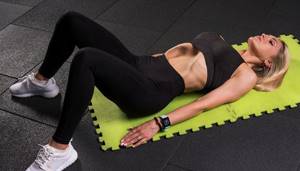
Sucking in the abdomen while lying down
The recommended frequency of execution is three times a day, 10 times.
Pelvic tilt
This is a more difficult option for a beginner. The difficulty of the exercise lies in the ability to focus attention on the pelvic muscles without including the buttocks in the work. The execution steps are as follows:
- You need to lie on your back and bend your knees.
- The second step is to place your palms on your lower abdomen while simultaneously tensing your abdominal muscles.
- Breathing needs to be stabilized. The pelvis tilts upward until the lower back touches the floor (the arch in the back when lying down should disappear). Do not strain other parts of the body.
- The time of static position holding is up to 10 seconds.
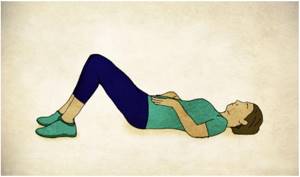
Exercise for diastasis: pelvic tilt
The recommended number of approaches is up to 5.
Side plank
This option is well suited if you have diastasis. Execution steps:
- Stand facing the wall, leaning on straightened arms.
- Next, you need to tense your abs while simultaneously pulling in your abdominal muscles.
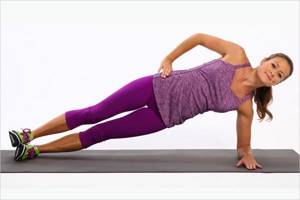
Plank sideways
It is recommended to do 10 repetitions in one approach.
Reverse plank
This is a good option for expanding your arsenal of exercises. The benefit of the reverse plank is static strengthening of the lower back, which is also beneficial for mothers. The execution algorithm is as follows:
- You need to lie on your back, place your legs hip-width apart, and place your feet on the floor.
- The arms are extended along the body. Next, you need to pull your shin towards your buttocks so much that you can reach your heels with your fingers.
- As you inhale, lift your hips up, and as you exhale, lift your body and straighten your chest.
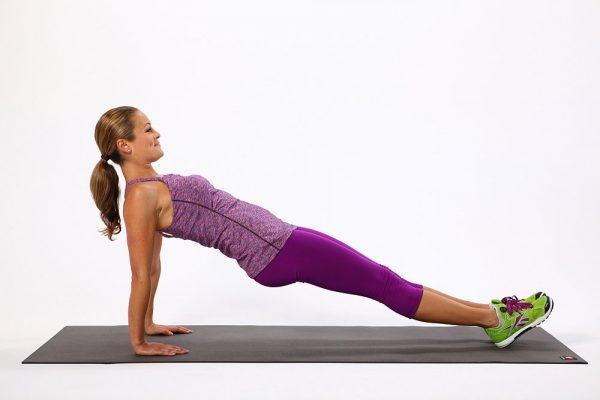
Reverse plank stand
This needs to be repeated 5–10 times in a row.
Hula Hup
You can spin the hoop if there are no gynecological contraindications. If you have uterine fibroids, cysts or endometriosis, hula hoop is contraindicated. The weight of the projectile should not exceed 1.5 kg. The hoop engages the oblique abdominal muscles, which also help combat aponeurosis separation. It is necessary to twist the hula hoop alternately, in different directions. The duration of the lesson is about half an hour a day.
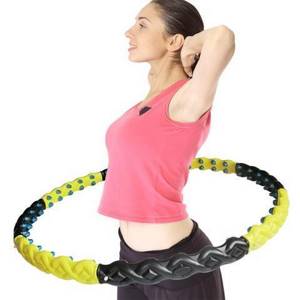
Hula hoop for diastasis
Crunches with a towel
Traditional abdominal crunches are not recommended if you have diastasis. An alternative option for performing the exercise is towel crunches. It is necessary to wrap the body in a towel and grasp the opposite edges of the fabric with your hands. When performing twisting, your hands simultaneously pull the ends of the towel in different directions. The number of repetitions is no more than 5-10 at the initial stage.
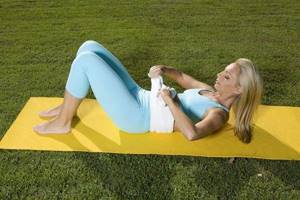
Exercises for diastasis with a towel
Lifting the pelvis while lying down
The second name of the exercise is the gluteal bridge. The exercise is performed in a lying position on your back. Feet are placed hip-width apart with the feet fully resting on the floor. At a calm pace, you need to raise your pelvis, squeezing your buttocks at the top. It is necessary to monitor the speed and working amplitude. A sudden descent may cause excessive stress on the lower back, which is not recommended after a recent birth. The gluteal bridge tones the buttocks and pelvic muscles and helps restore the aponeurosis.
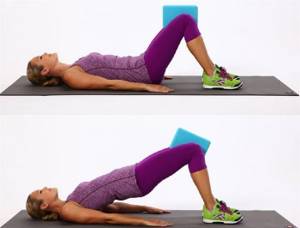
gluteal bridge
Prohibited exercises
What not to do when separating the rectus muscles after childbirth:
- Lie on a fitball.
- Do any exercises in a knee-elbow position.
- Tighten your abdominal muscles with crunches, planks or push-ups.
- Practice elements of yoga that use abdominal breathing techniques.
Requirements for probiotic products

One of the main requirements for probiotic products is the survival of the probiotic strain in the gastrointestinal tract, as well as in the finished product throughout the entire shelf life.
For such control, modern production facilities operate research centers and laboratories. Their main task is to select probiotic bacteria and study their properties. Some large production facilities have microbiological laboratories in which about 4,000 different strains have been collected. They determine which prebiotics and probiotics are better and more effective.
Precautions for postpartum diastasis
When the abdominal muscles diverge after childbirth, it is necessary to pay attention not only to the exercises performed, but also to everyday physical activity.
- When coughing, laughing, or sneezing too much, support your abs with your hands and apply gentle pressure to avoid putting unnecessary pressure on your abdominal muscles.
- Do not lift heavy things over 5-6 kg.
- Lift things weighing less than 5 kg with your arms bent at the elbows (not straight!). When picking things up from the floor, squat rather than bend.
- When rocking your baby, wear a postpartum bandage or tighten the tummy with an elastic bandage.
- Sleep on your side/back (not your chest!).
- Before getting out of bed or lying on it, roll over onto your side. And get up from the “lying on your side” position.
- Before getting up from the chair, you need to shift your weight to your left or right buttock and pull in your stomach. Stand up primarily using your legs, without straining your abs. You can push off with your hands.
On topic: How to remove lower belly fat with exercises
